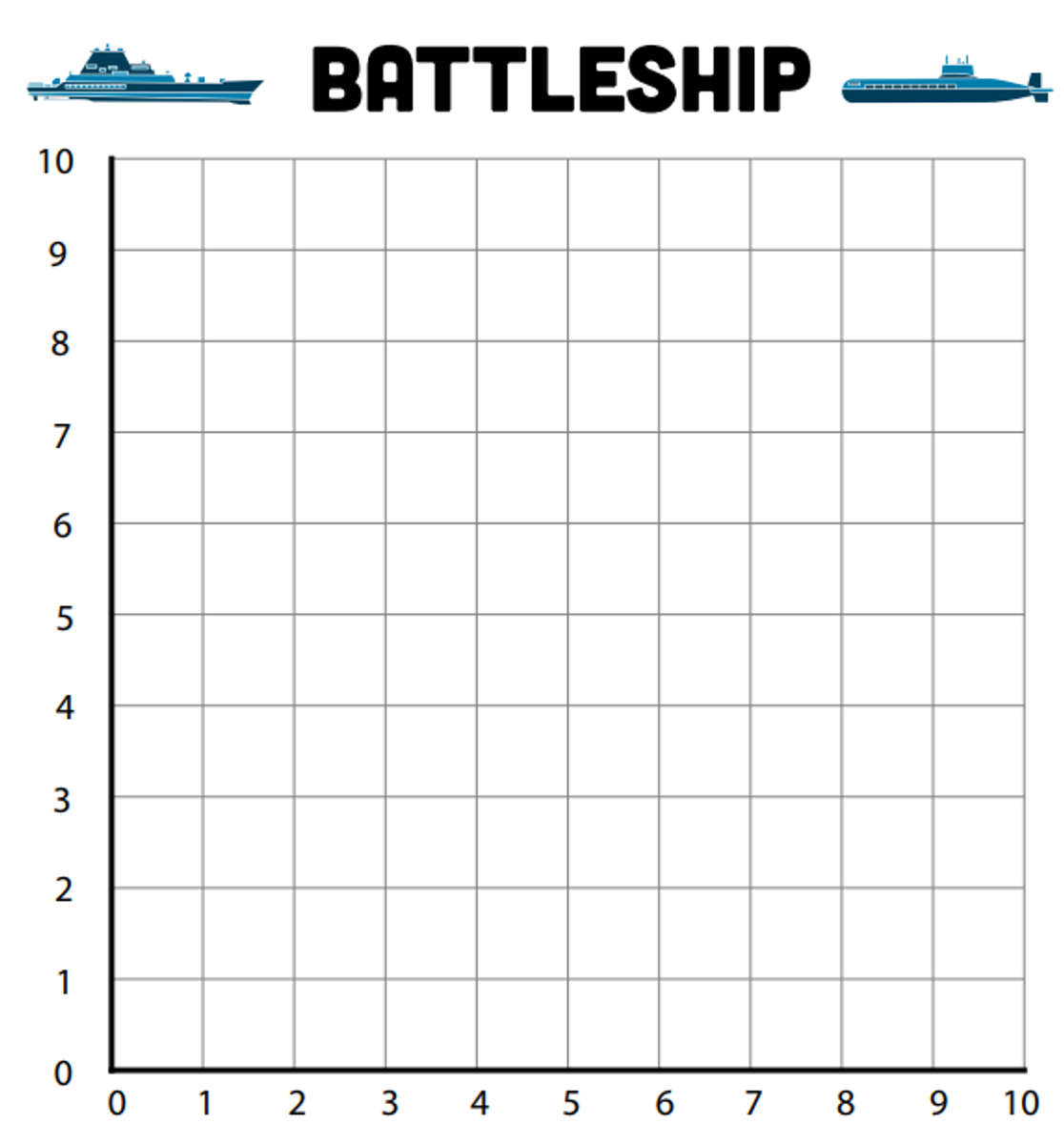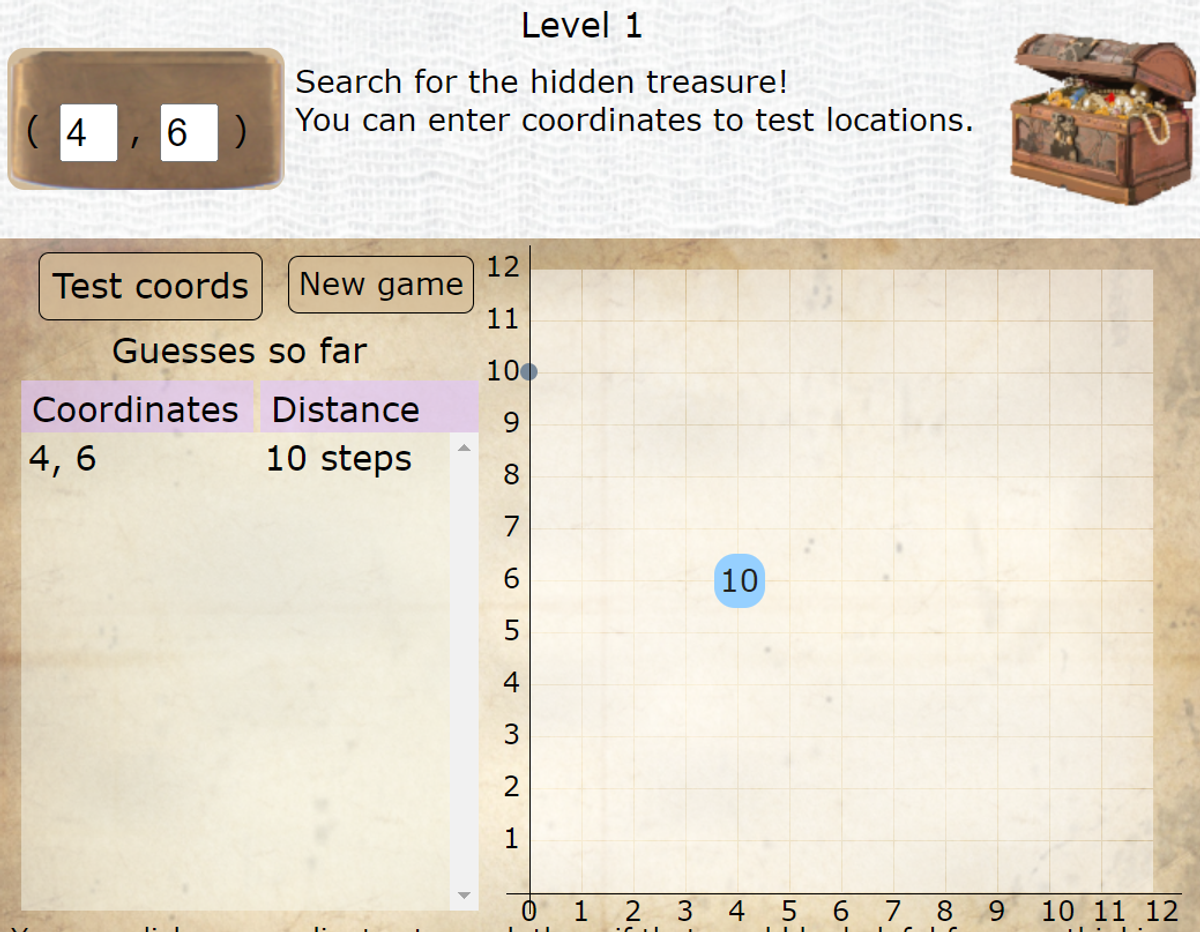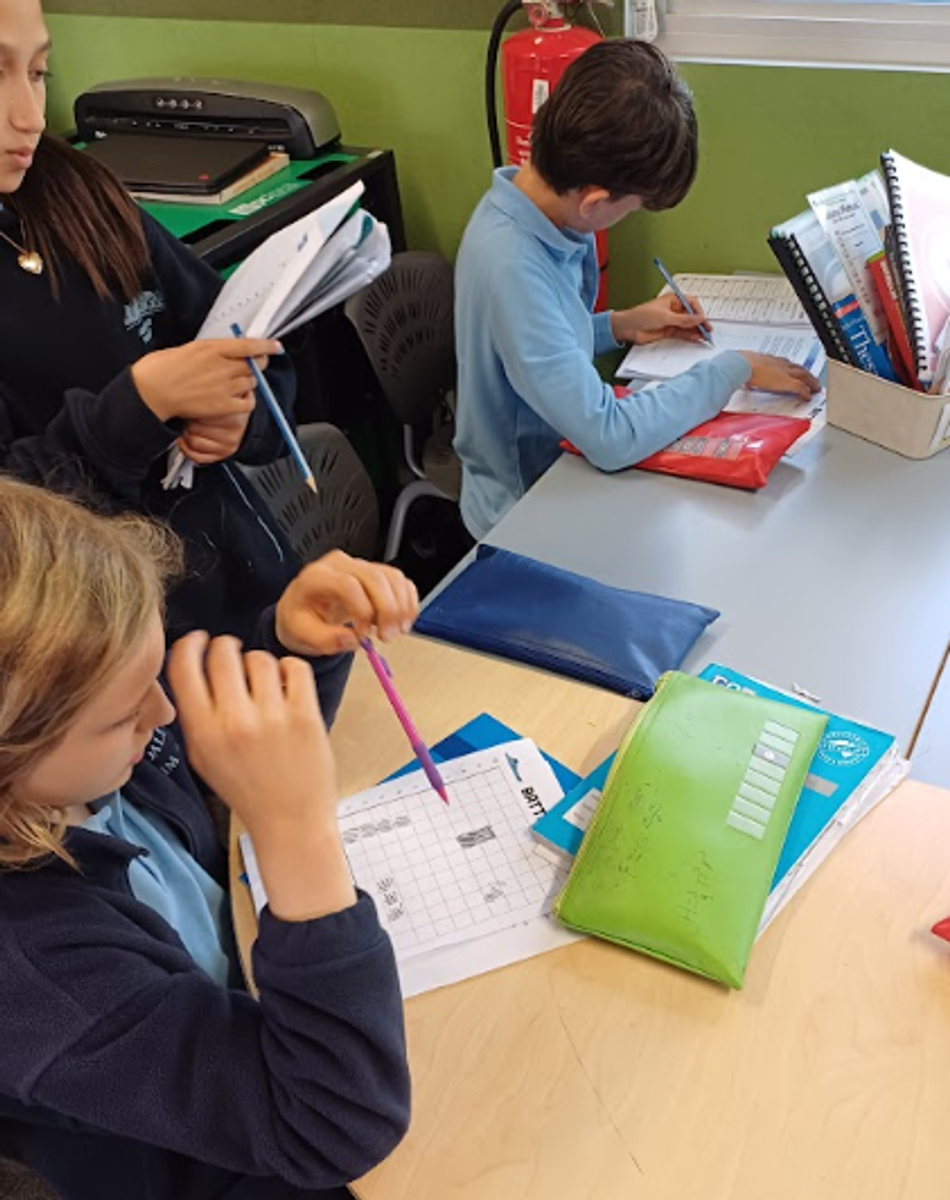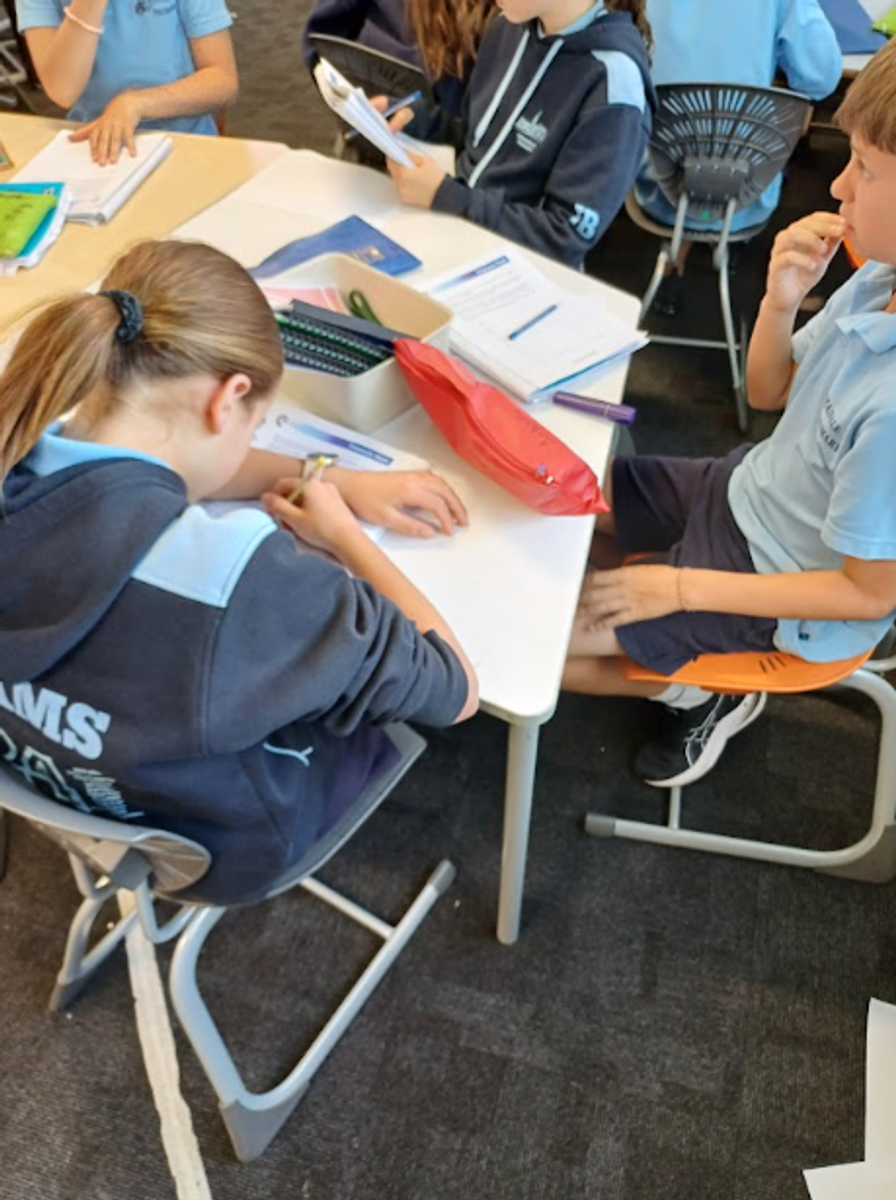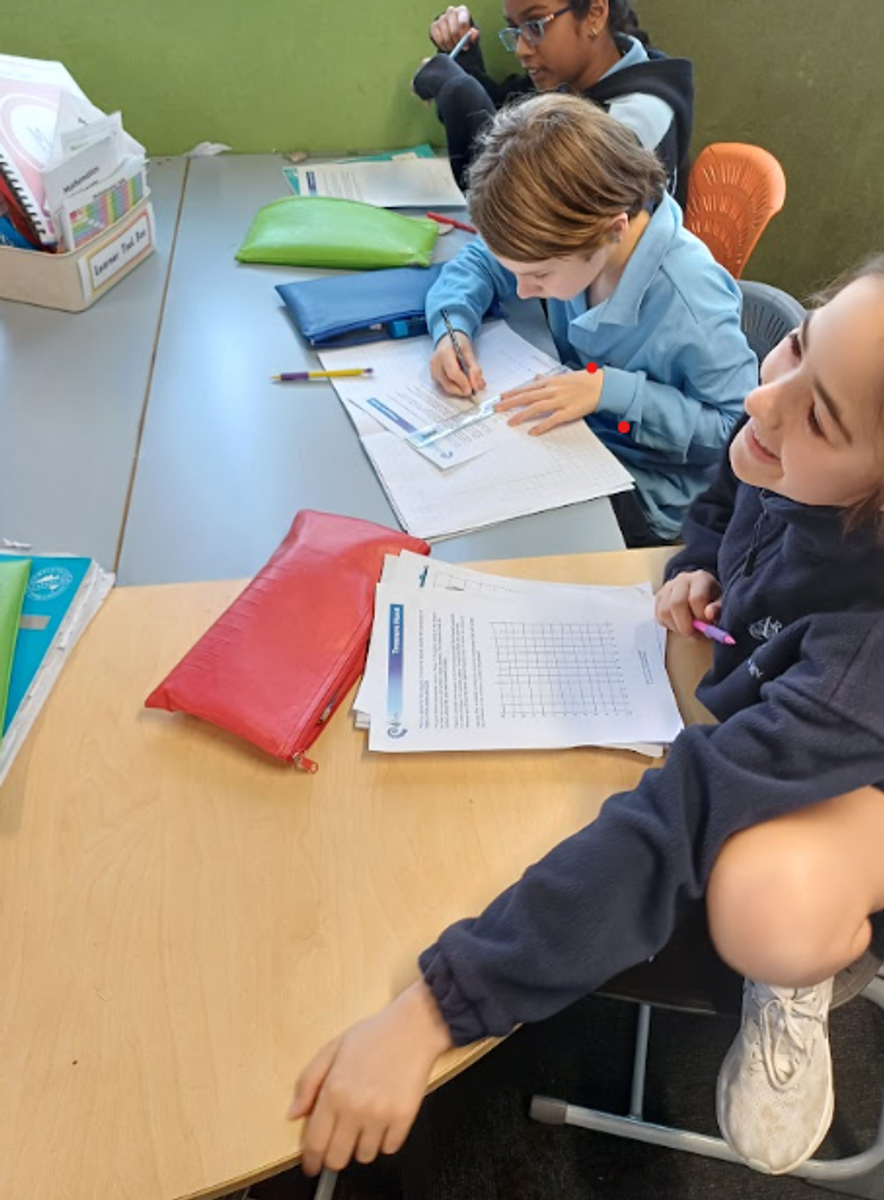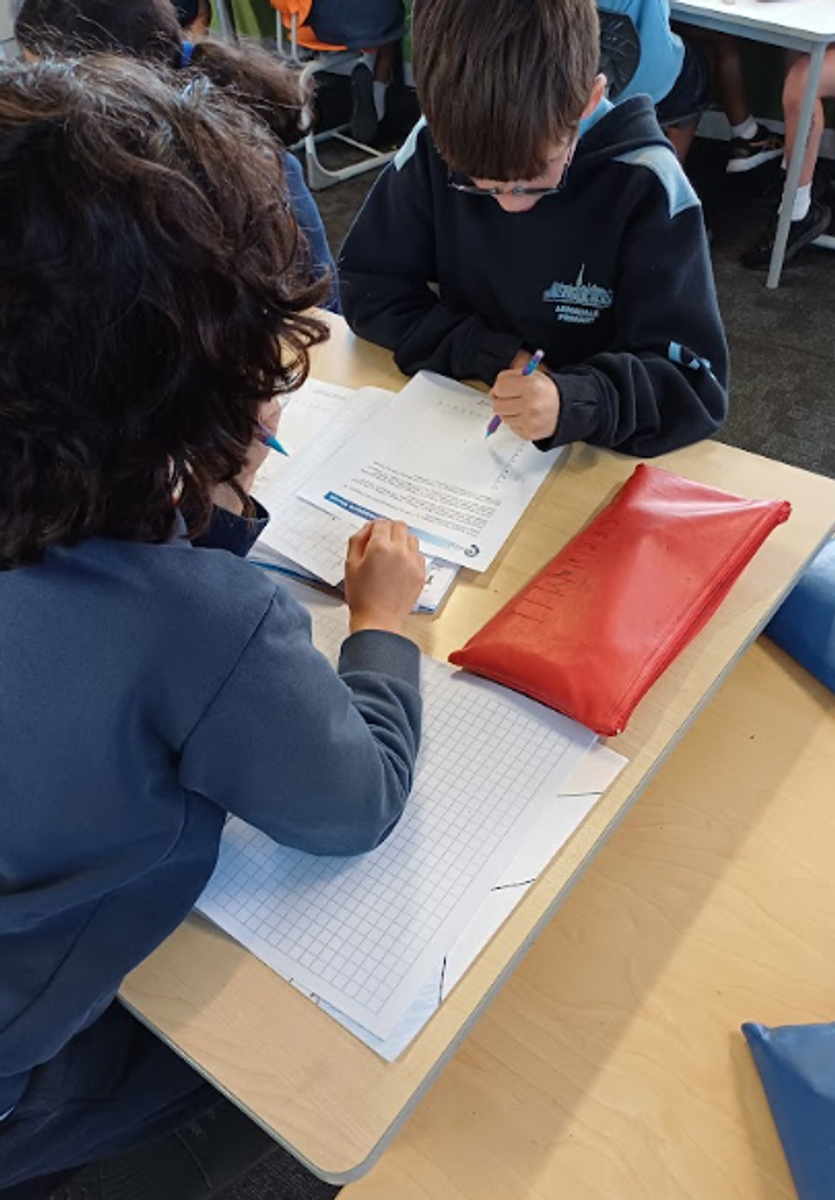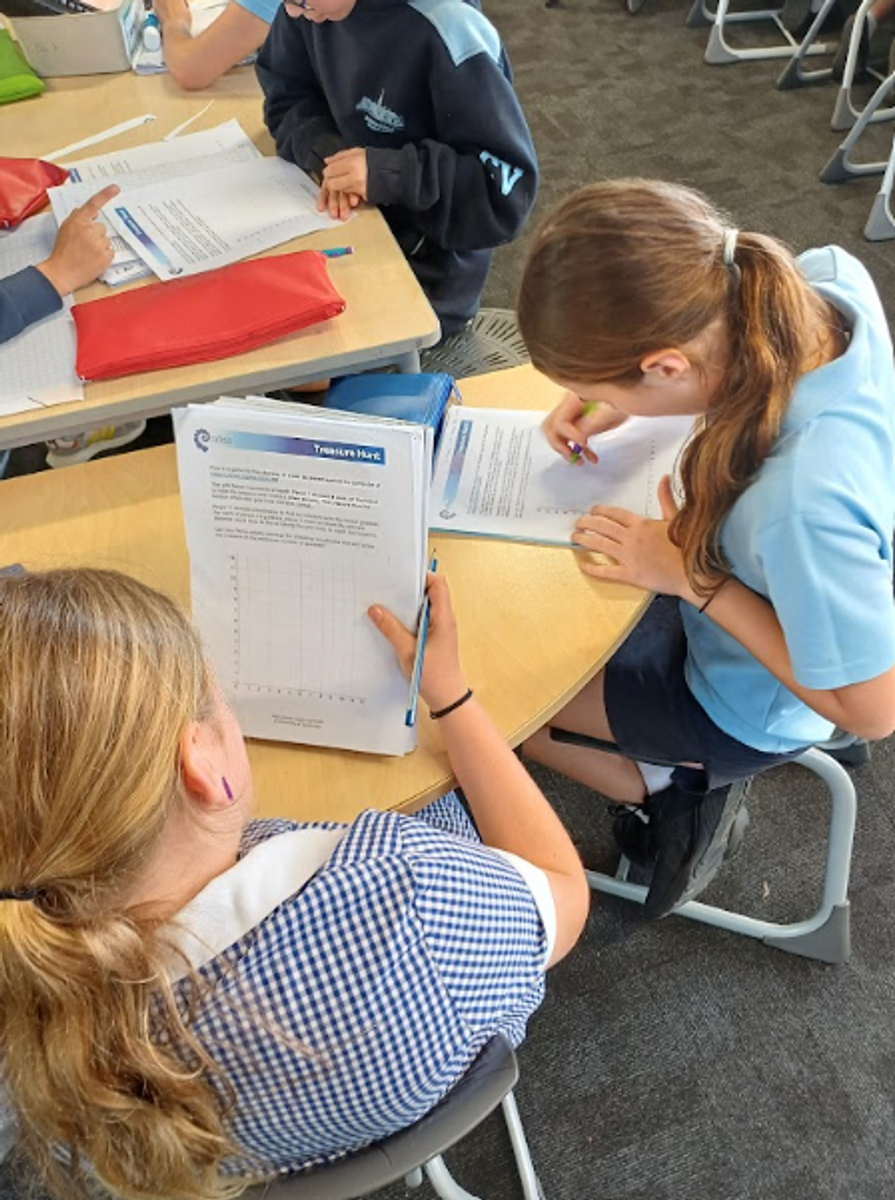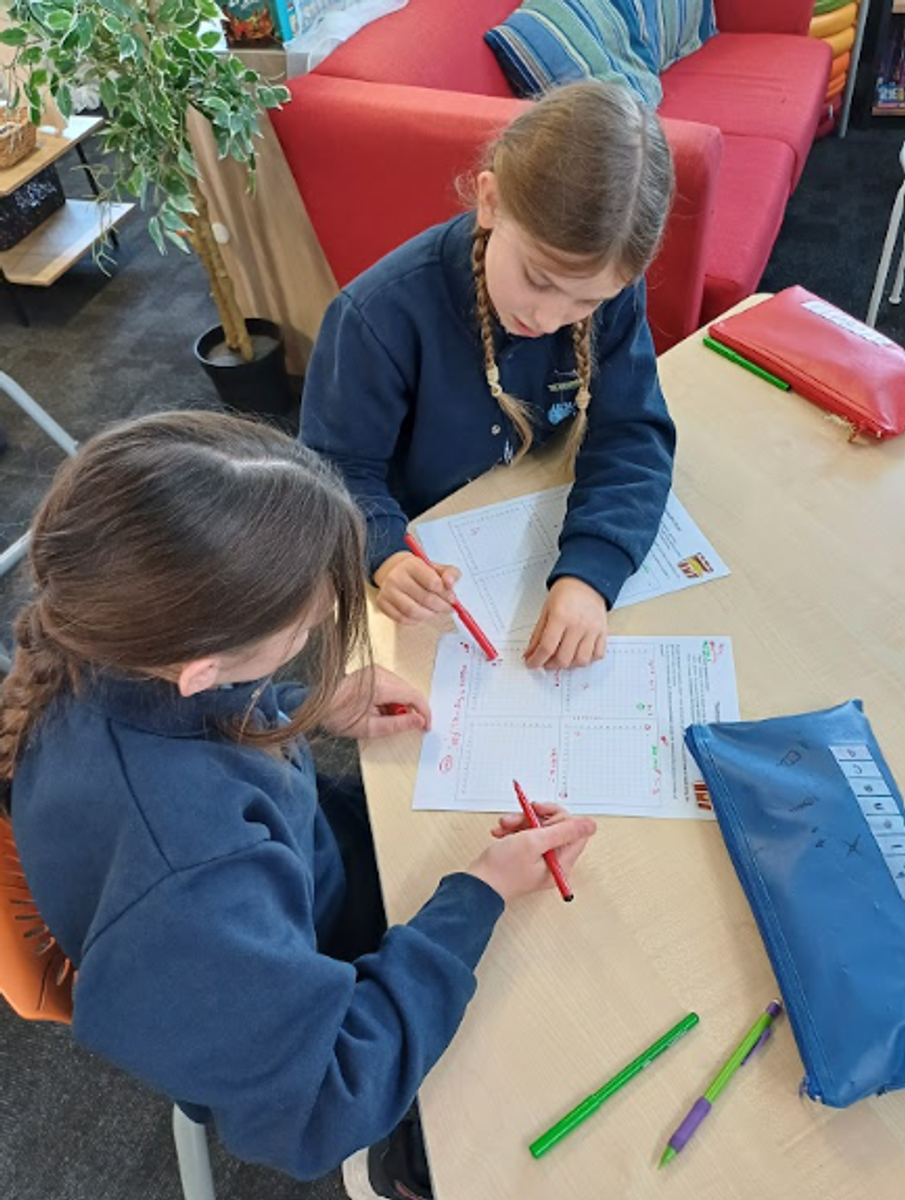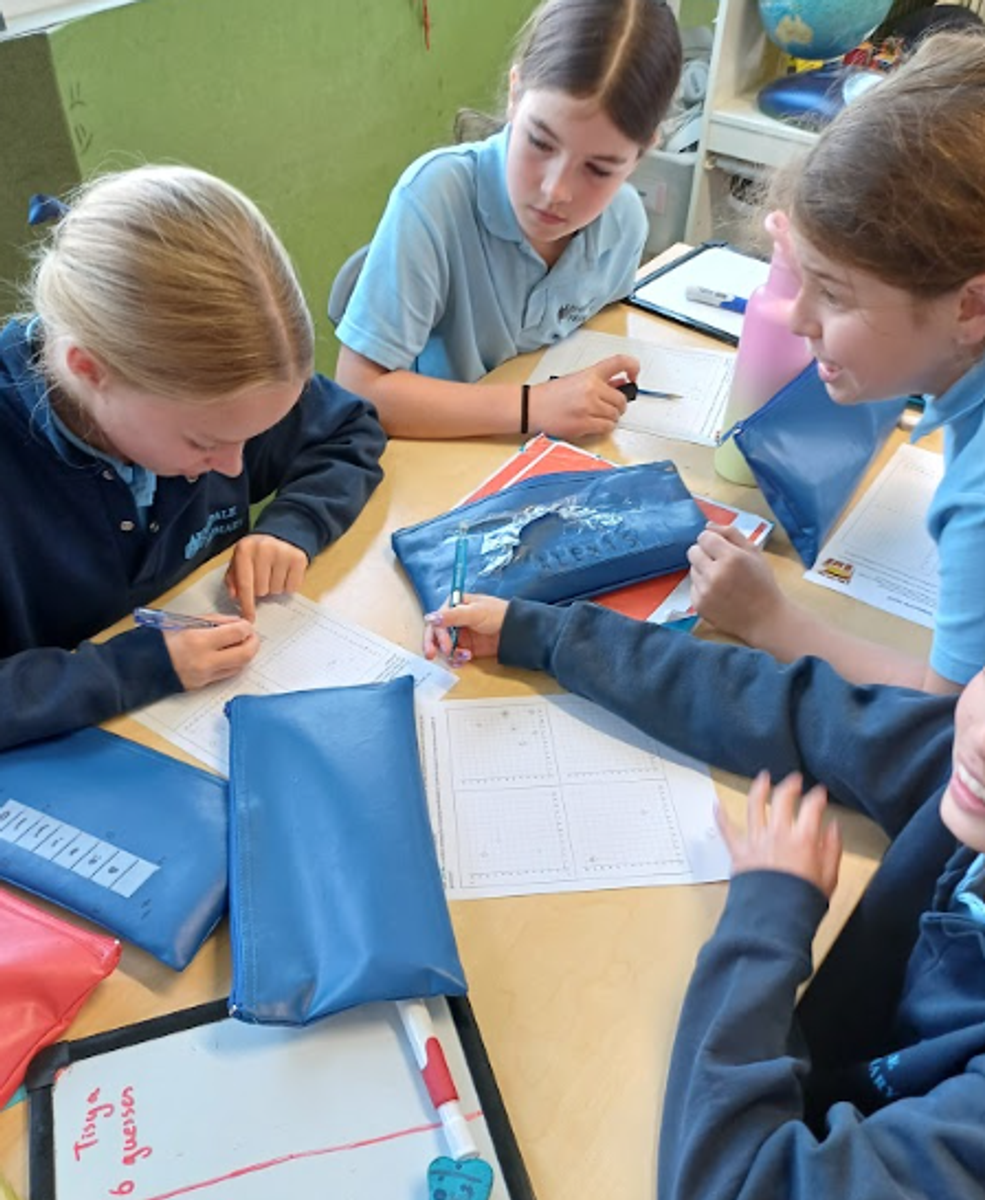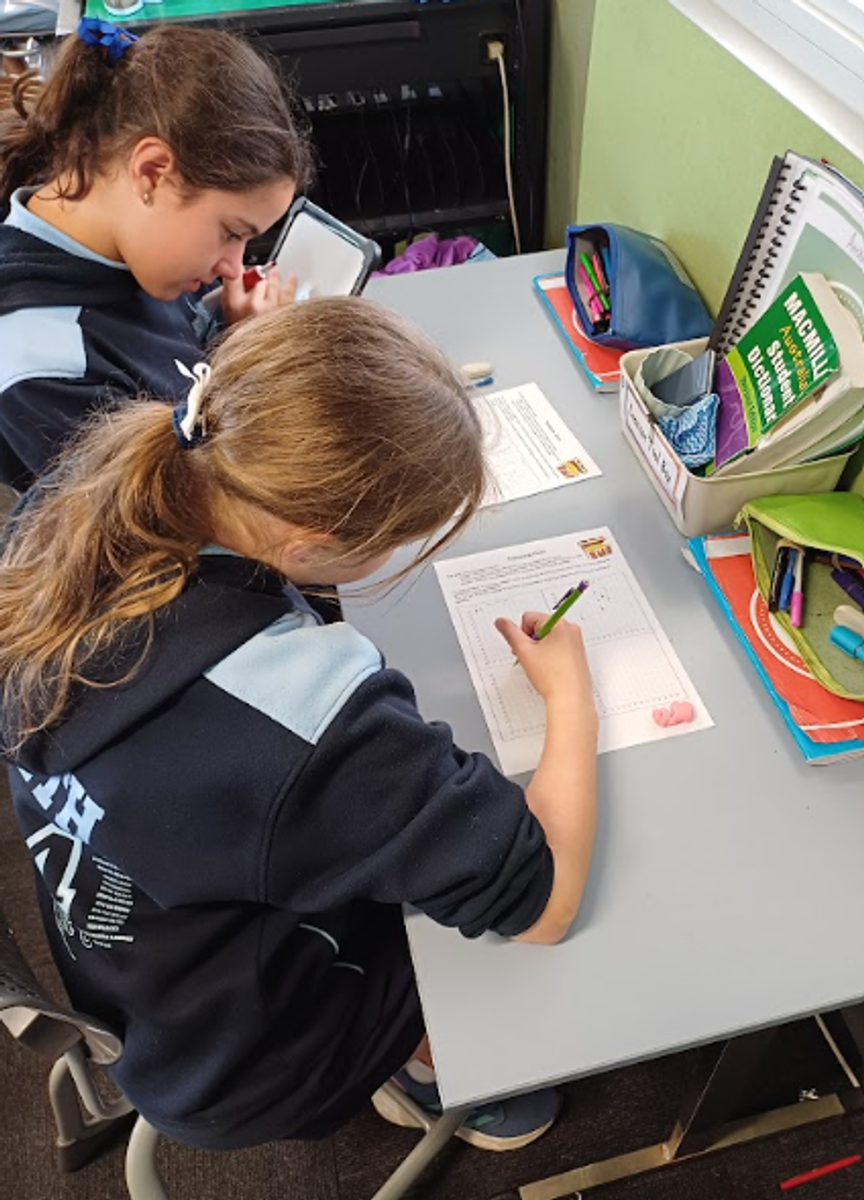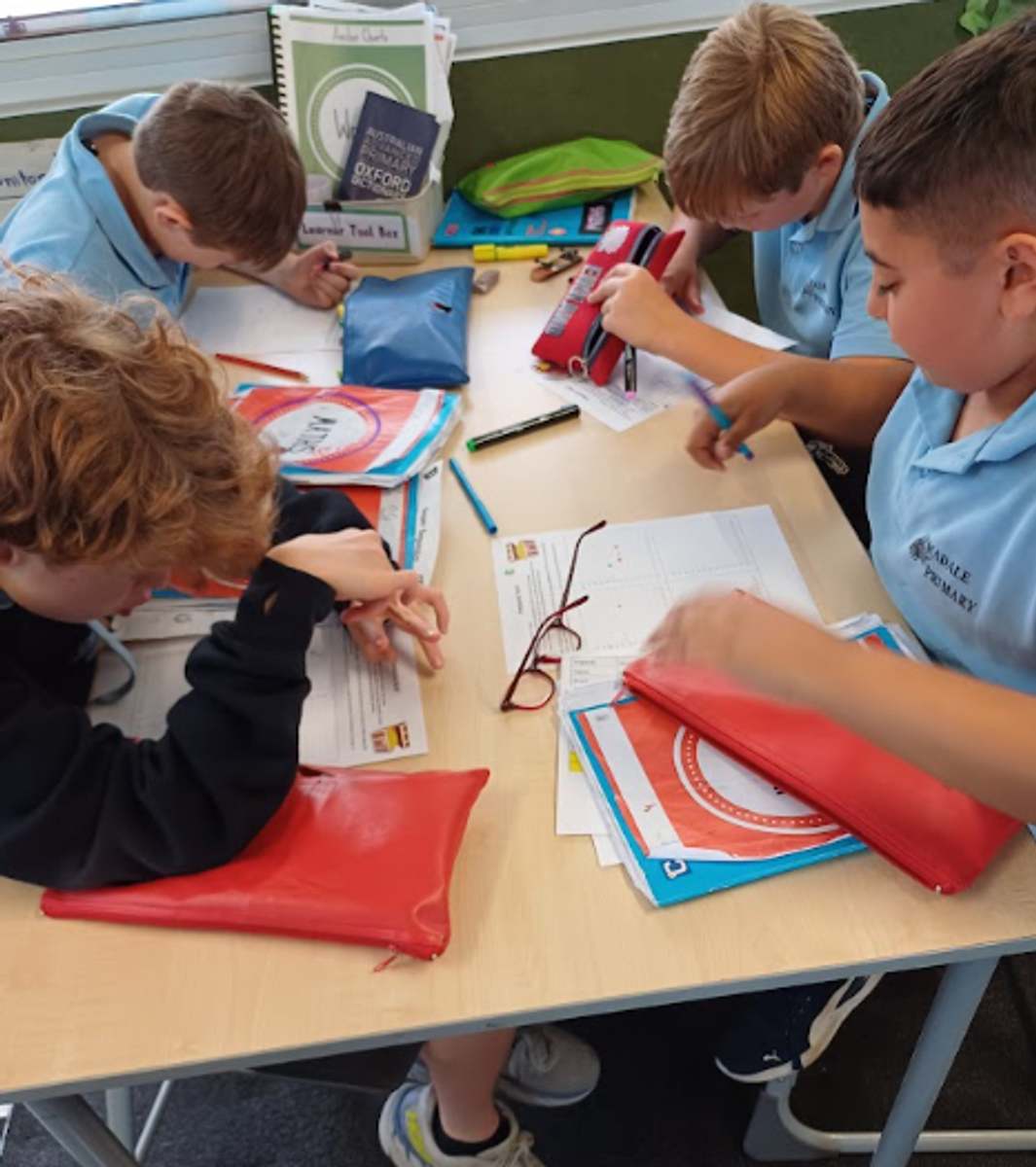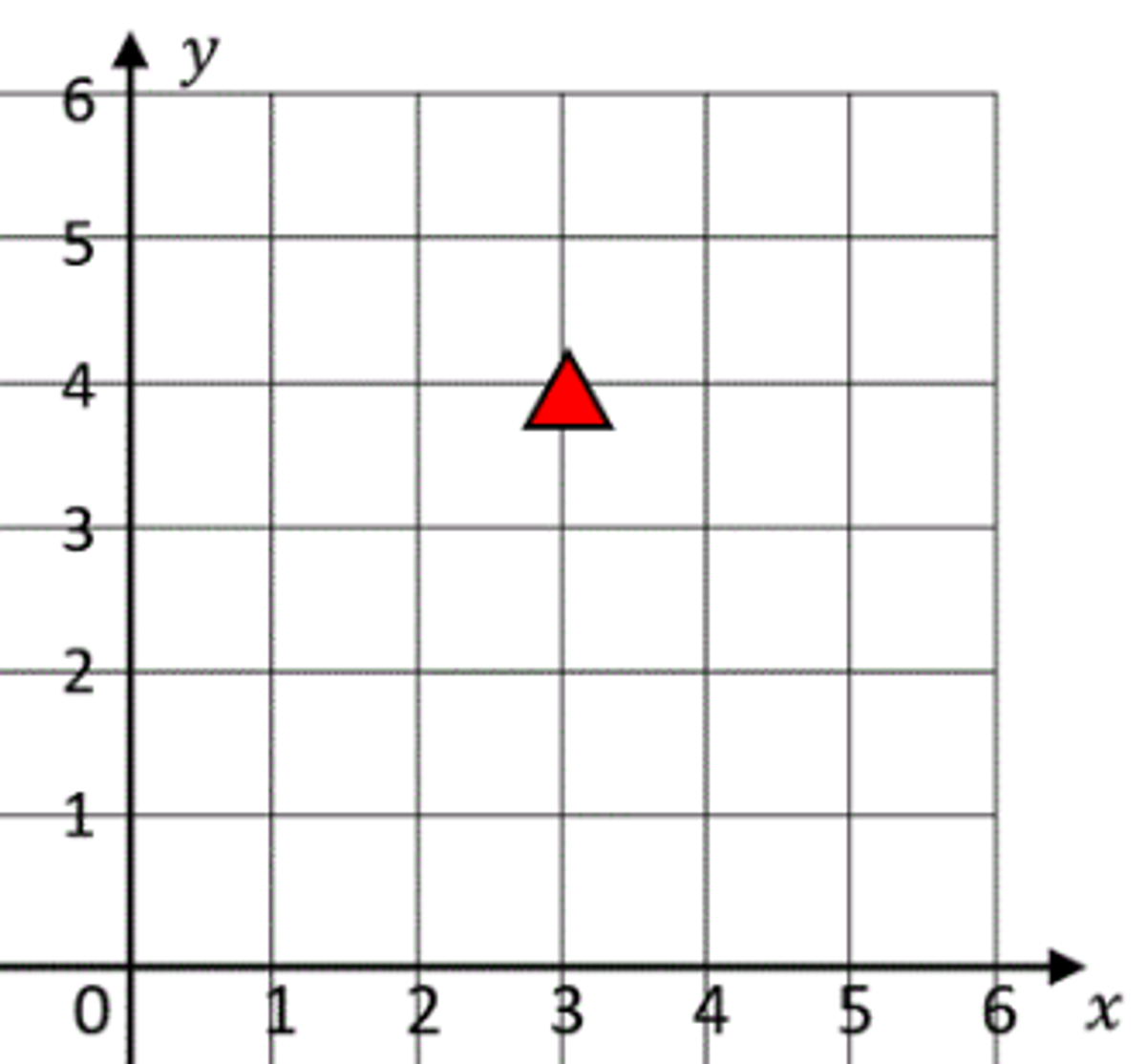Year 5/6 Bulletin
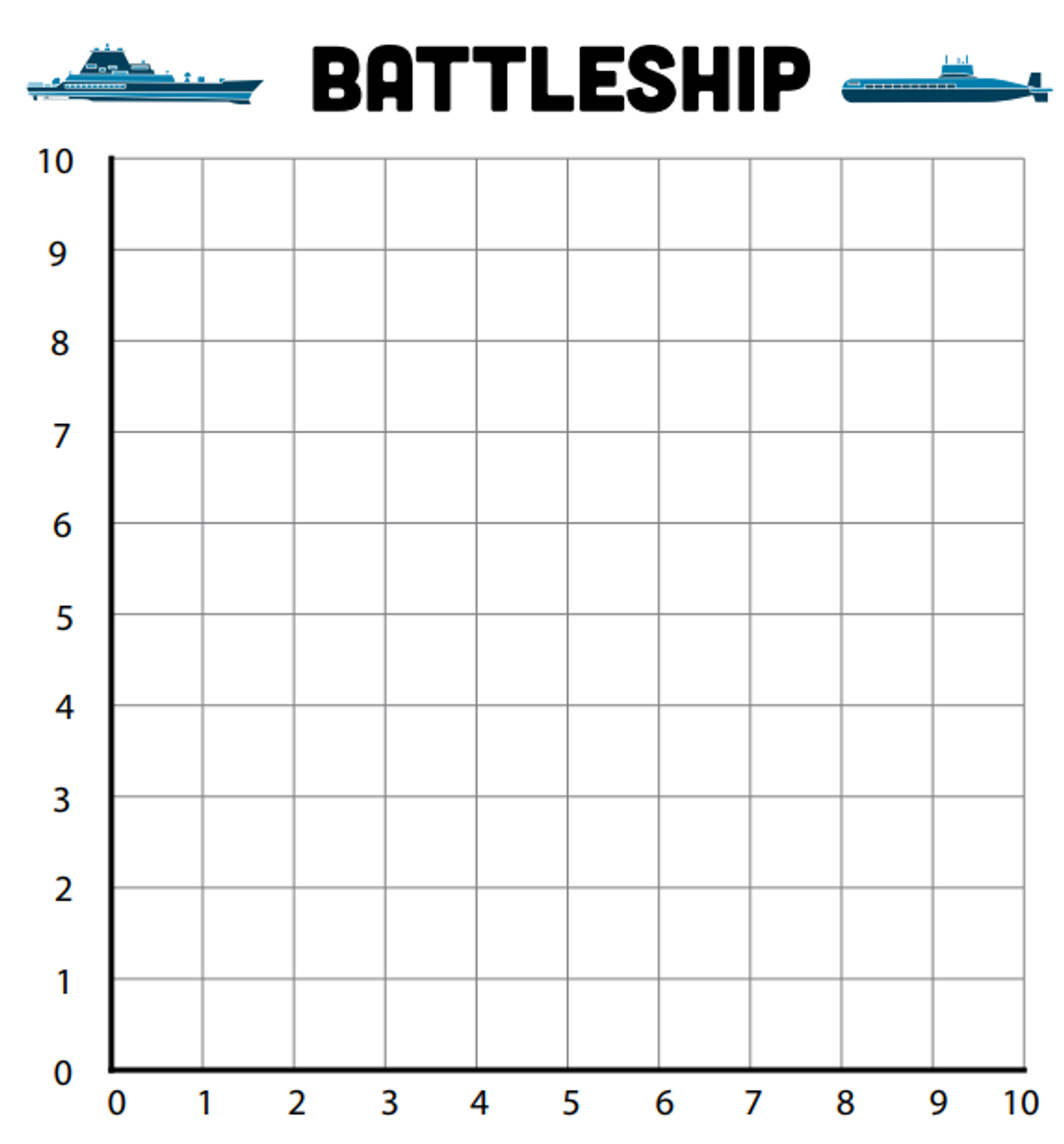
Maths - Position and Location
Purpose of the unit:
Position and Location in maths helps us figure out where things are and how to describe their place or direction. By learning about position and location, students are exposed to understanding maps, find specific spots on a grid, and give directions. It helps with learning how to tell exactly where something is, whether it’s on paper, in a game, or even in the real world! This helps us with things like reading maps, giving directions, and organising spaces around us.
Lesson Learning Intention:
To construct a grid coordinate system that uses coordinates to locate positions within a space.
Learning experience overview:
Fluency Game—Battleships -
Students played a game of battleships on paper. They randomly (some strategically) placed ships that were 2, 3, 4, and 5 cross intersections long within their graph. Each player took turns guessing their opponent's location of their ships, with an emphasis on the use of precise coordinate language to determine whether their guesses were correct. The game was played until the time was up or someone had won.
Whole:
Being the first lesson in ‘Position and Locating’, we covered off the essentials needed to read and write coordinates on grids. We covered what the y-axis is, what the x-axis is, and discussed which is to be read first when writing coordinates (x-axis then the y-axis). We identified that the y-axis is the vertical line, and that the x-axis is the horizontal line.
The hidden treasure website was loaded to show how the following task was to be completed.
Small:
In pairs, students played the hidden treasure game on paper. Each pair decided who would go first in guessing, and the other would give instructions about how far away their opponent is from their treasure. The person guessing would keep going until they eventually found the treasure. The amount of steps it took to complete was documented and then roles were reversed. The aim was to guess where the treasure was in the least amount of guesses.
The amount of steps were calculated by how many moves sideways and up and down the guess was from the treasure.
Whole:
Recap of lesson through a discussion by identifying effective strategies used to find the location of the treasure in the least amount of guesses possible. Students then completed a quick exit ticket prior to leaving the classroom to ensure understanding of the lesson’s learning intention.
Exit ticket:
On a post it note - Write your name, date, and then the exact coordinates of the red triangle.
What you can do to continue the learning at home:
Here are some coordinate and grid activities ideas that can be done at home and are both educational and fun.
Coordinate Picture Art:
Create a grid on paper and plot points that, when connected in sequence, reveal a picture. You could draw your own simple designs or find coordinate picture worksheets online (e.g., drawing animals, shapes, or objects). This activity combines creativity with coordinate practice, helping with becoming more comfortable with plotting points.
Coordinate Battleship:
Continue the Battleship fluency game at home and verse each other as a family to see who has what it takes to be the champion of coordinates in the household!
Treasure Map Coordinates:
Hide small items around a room or outdoor area, mapping the locations on a coordinate grid. List each item’s coordinates and challenge a family member to find the items using only the coordinates as clues. This activity incorporates real-life mapping and problem-solving skills.
Get creative and hands-on with learning at home to consolidate what is being taught in the classroom. We look forward to hearing how the continued learning is happening at home!
Jenny, and Brad
Year 5/6 Team

